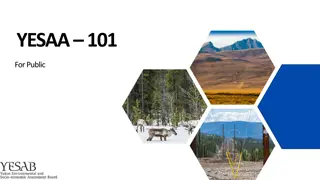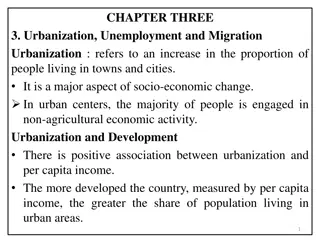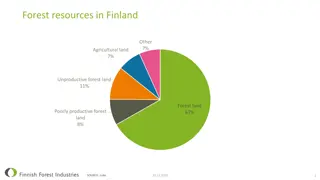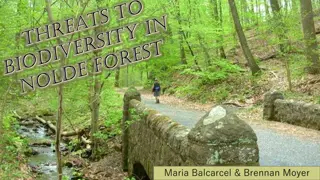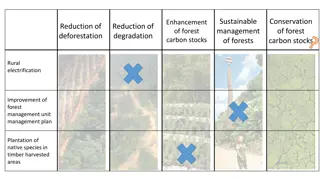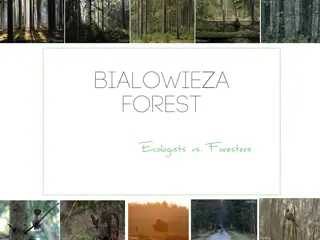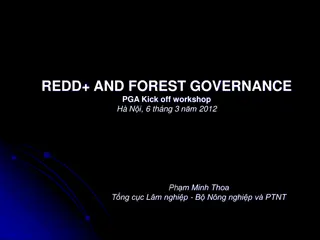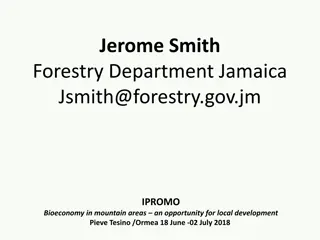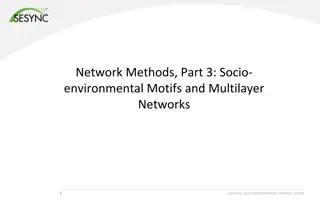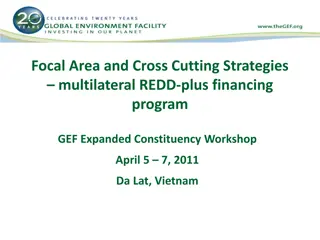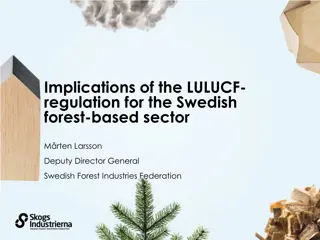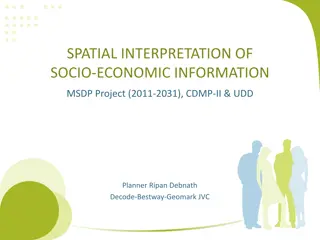Managing Urban Forest Patches for Socio-Environmental Services
Explore the complexities of managing urban forest patches (UFPs) to enhance ecosystem services while balancing competing goals for nature and humans. Delve into examples like aesthetics, dead wood, and local climate regulation to understand tradeoffs and choices. Diagram ecosystem services across multiple priorities to navigate the challenges in urban landscapes.
Download Presentation

Please find below an Image/Link to download the presentation.
The content on the website is provided AS IS for your information and personal use only. It may not be sold, licensed, or shared on other websites without obtaining consent from the author.If you encounter any issues during the download, it is possible that the publisher has removed the file from their server.
You are allowed to download the files provided on this website for personal or commercial use, subject to the condition that they are used lawfully. All files are the property of their respective owners.
The content on the website is provided AS IS for your information and personal use only. It may not be sold, licensed, or shared on other websites without obtaining consent from the author.
E N D
Presentation Transcript
Urban Forest Patches Lesson 2: Socio-Environmental Services
Management of Urban Forest Patches (UFPs) Ecosystem Services (ES): Ecosystem managers have many competing goals: Should the UFP serve nature, humans, or both? What management choices enhance multiple ES? What choices are tradeoffs between rival ES? 1
Management of Urban Forest Patches (UFPs) Examples: Aesthetics: Dead Wood: Human preference for tidy forests Versus habitat and soil quality provision of deadwood Versus forest fire danger posed by dead biomass Local Climate Regulation: Canopy Cover: Reducing urban heat islands with total tree cover Versus recreational spaces like open fields for sports Versus pollinator gardens with full-sun wildflowers 2
Diagramming Ecosystem Services Across Multiple Priorities Managing the whole landscape: historical, hybrid, and novel ecosystems by Hobbs et al. Two perspectives on a typical landscape found in peri urban areas worldwide. Panel (a) illustrates how diverse landscape elements are differentiated along a range of gradients in characteristics and management emphases (expanded from Kueffer and Kaiser Bunbury 2014), whereas panel (b) indicates how different elements provide differing combinations of ecosystem services. The opportunities and constraints vary greatly among elements. This type of mixed landscape is increasingly prevalent as urban areas grow and is often the locus for community conservation and restoration projects. Although the landscape depicted is relatively small scale, similar issues can be identified at broader scales incorporating large nature reserves and production landscapes. 3


